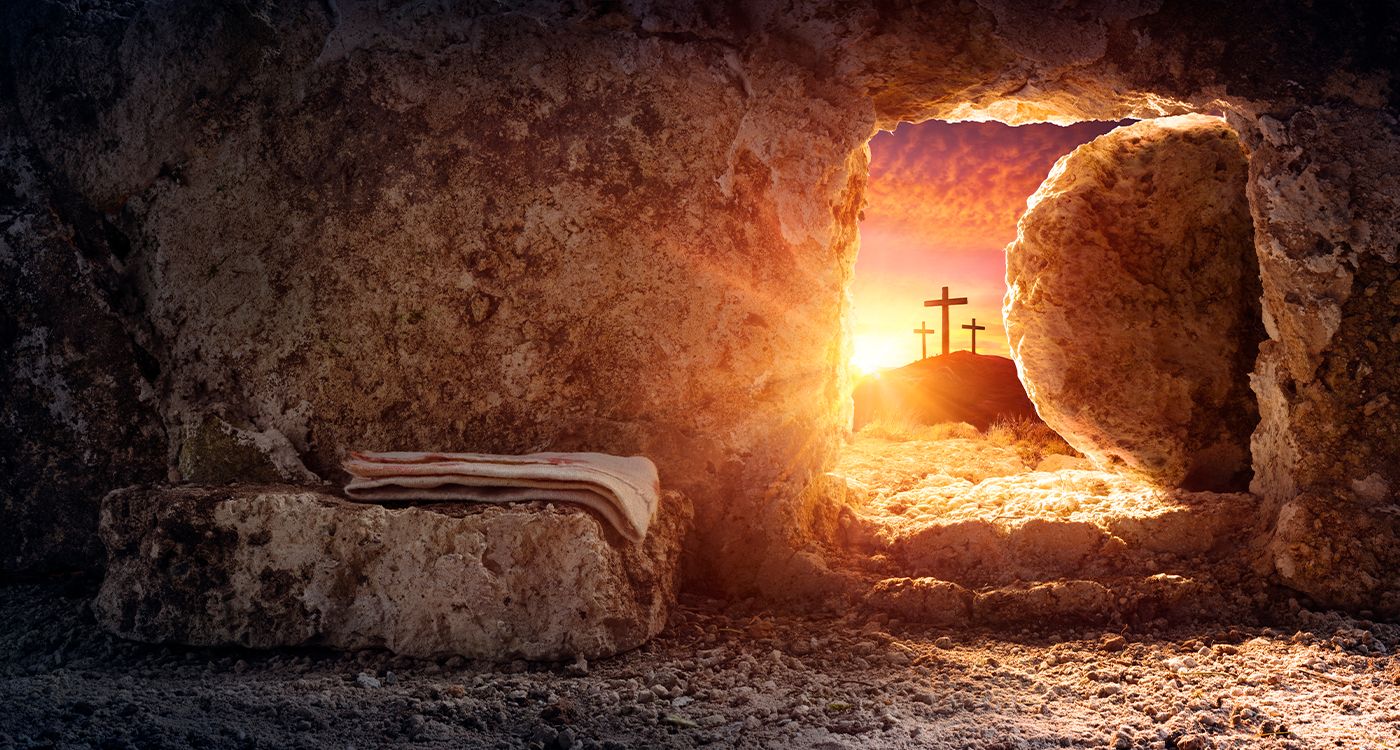
A 2,000-year-old Christian celebration, Easter commemorates the resurrection of Christ and lies at the very heart of the Christian faith. A time of joy and sharing, Easter is rich with traditions—from ringing church bells to egg hunts and the traditional Easter lamb. But did you know that Easter Monday is a remnant from the time of Emperor Constantine, when the entire week following Easter was a public holiday? This period was known as the Easter Octave, and it remained part of the liturgical calendar until 1802. Let’s take a look back at this little piece of history…
Easter Monday—a public holiday—could be seen as the survivor of an old Christian tradition: the Easter Octave. The Easter Octave was established by Roman Emperor Constantine (272–337 AD) and extended from Easter Sunday, commemorating Christ’s resurrection, to Divine Mercy Sunday. During this holiday week celebrating Jesus' return to life, Christians would attend daily Masses, and some even undertook pilgrimages to Rome. Yet in Christian tradition, the number seven appears frequently. So why do we speak of an octave, derived from the Latin octavus, meaning "eighth"?
Octave: The Eighth Day, the Day of Fulfillment
For Father Mathieu Thouvenot, one day is simply not enough to celebrate Easter. “Everything begins with the resurrection of Christ,” he stated in an April 2013 interview with Radio Chrétienne Francophone (RCF). “Everything restarts. This resurrection is so monumental that one day alone isn’t enough to celebrate it!” he continued.
Thus, the Easter Octave extended from Easter Sunday to the following Sunday. “The eighth day is the day of fulfillment. A week lasts seven days. The eighth day is the ultimate culmination, the day of re-creation, a sign of eternity. Genesis tells us why the week is seven days long. Genesis stops there. And the Gospel, with Jesus’ resurrection, announces an eighth day that represents the completion of creation. It is only by reaching Jesus’ resurrection that we attain the ultimate state God intended,” Father Thouvenot also explained.
This was a highly solemn week, gathering everyone in prayer and allowing the Easter celebration to be extended.
Symbolism
The practice of the religious octave already existed in the Old Testament, particularly during the Feast of Tabernacles (Leviticus 23–26).
These eight days were a time to draw deeply from within, to focus on the essentials of daily life. A time to spiritually recharge and regain strength for the days ahead. They also offered an escape from stress, sensationalism, and the hustle of modern life—eight days of spirituality.
Prayers and hymns were repeated daily. Churches rang their bells at 6 PM throughout the Easter Octave.
All elements of the liturgy aimed to maintain the joy of Easter: the Alleluia was sung before the Gospel reading, in the Psalms, and during hymns.
The Easter Octave thus gave a special tone to the Easter celebration, as each of the following eight days was still considered a day of festivity. These eight days served as a reminder that the mystery of Christ’s resurrection lies at the heart of the Christian life.
A Tradition That Ended in 1802
This tradition ended in 1802 under Napoleon Bonaparte, who, following the signing of the Concordat in 1801, took control over the organization of the Catholic Church in France.
He decided to reduce the number of public holidays (there were 50 at the time). Only a few emerged unscathed: the Assumption, Ascension, Christmas, and All Saints’ Day.
Through this decision, Napoleon also aimed to place the Catholic Church under state authority and curb its influence. To achieve this, he and Pope Pius VII signed a Concordat treaty and agreed to keep only Easter Monday as a public holiday.
Like many of Napoleon’s reforms, this one has endured in the French calendar. Today, out of the eleven annual public holidays in France, six are inherited from Christian traditions. These practices were not abolished even by the 1905 law on the separation of Church and State.
The History of Easter Monday
The word Pâques (Easter) is believed to come from the Hebrew Pessa’h, meaning “passage,” referring to the Jewish exodus from Egypt and the crossing of the Red Sea. Today, the Jewish religion celebrates Passover (without an "s") every spring to commemorate these historical events.
For Christians, Easter refers to the resurrection of Christ following his crucifixion in Jerusalem.
The celebration occurs at the end of Lent, a 40-day season of fasting and repentance that recalls Jesus Christ’s forty days of fasting in the desert.
This solemn period culminates in Holy Week, commemorating the biblical events of Jesus’ persecution, crucifixion, and death.
Holy Week includes Palm Sunday, Holy Thursday, Good Friday, Holy Saturday, and Easter Sunday.
This Catholic celebration takes place on the Sunday following the first full moon after the spring equinox—a festive day symbolizing renewal and love.
Even though only Easter Monday remains as a public holiday from the ancient octave, this legacy serves as a reminder that, for Christians, the Resurrection is a foundational event—one that transcends a single day of celebration.



Comments